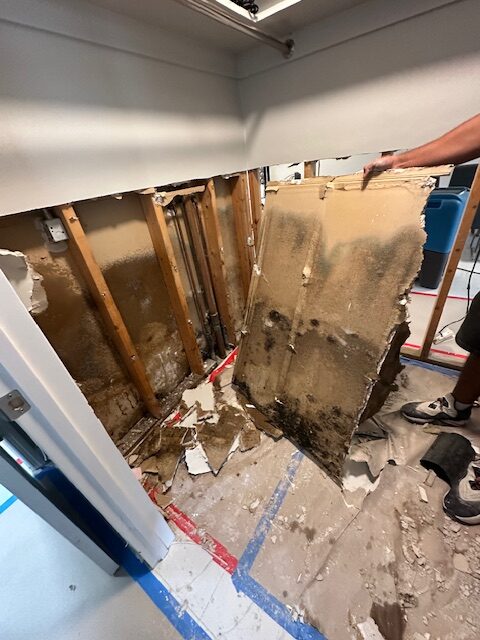9 Essential Tips for Dealing with Water Damage in Your Home

Dealing with water damage in your home can be overwhelming. Whether it’s caused by natural disasters or plumbing issues, the key is to act fast and smart. Follow these essential tips to tackle water damage effectively and minimize its impact on your cherished home.
1. Immediate Action: Stop the Water Source
When water damage rears its ugly head, the first order of business should always be to stop the water source. This could mean turning off the main water supply to your house if the cause isn’t immediately apparent. This decisive action can prevent further damage, making a crucial difference in the scale of your restoration project. Remember, quick thinking can save your home from more extensive water damage.
2. Safety First: Electricity and Water Don’t Mix
Once you’ve addressed the immediate emergency by stopping the water, the next step is ensuring your safety. Keep in mind, electricity and water don’t mix. Before you start the cleanup, switch off the power to affected areas to mitigate the risk of electric shock. It’s essential to prioritize your safety above all else, even if it means waiting for a professional to safely address any electrical risks.
3. Document Everything for Insurance
As you prepare for the cleanup phase, don’t forget to document everything. Photographs and detailed notes on the extent of the damage will be invaluable when filing an insurance claim. Water damage can be tricky when it comes to insurance, and having a thorough record of all damages will help ensure your claim is processed smoothly. Be meticulous, and start compiling documentation before the cleanup process obscures the evidence.
4. Start the Drying Process ASAP
Moisture is the enemy in the aftermath of water damage. Start drying out your home as soon as possible to prevent mold and mildew growth, which can create health hazards and cause further damage. Use fans, dehumidifiers, and open windows – whatever you have at your disposal to kickstart the drying process. This step is crucial and can greatly influence how well your home recovers from the incident.
5. Remove Water-Damaged Items and Materials
Sorting through your possessions, you’ll need to determine what can be salvaged and what must be discarded. Water-damaged items like carpeting, furniture, and drywall might need to be removed to prevent mold growth. This can be emotionally challenging, but it’s an important step in the restoration process. Be thorough in your assessment, considering the long-term health and safety of your home.
6. Clean and Disinfect Affected Areas
After removing damaged materials, it’s time to clean and disinfect all affected areas thoroughly. Water damage can introduce bacteria and mold into your home, which are not only damaging to the house itself but can pose significant health risks. Utilize appropriate cleaning solutions and equipment to ensure that all surfaces are clean, paying special attention to hidden spots where mold can thrive undiscovered.
In addition to early drying efforts, maintaining airflow with fans, dehumidifiers, and negative air scrubbers helps prevent mold and mildew from gaining a foothold. These tools can significantly reduce humidity levels, making it harder for mold to grow. This aspect of water restoration cannot be overstated; it’s essential for maintaining the integrity and health of your living space.
7. Consult a Water Restoration Professional
There comes a point in the water damage cleanup process where consulting a water restoration professional becomes invaluable. They bring expertise, equipment, and experience, ensuring your home is properly and safely restored. Especially in cases of significant damage, a professional can evaluate the situation and perform necessary procedures you might not be equipped to handle, like structural drying and mold remediation.
8. Review and Update Your Home Insurance
Lastly, take this experience as a cue to review and update your home insurance. Ensure your policy covers the types of water damage most likely to occur in your area. This preparatory step can save you a lot of headaches and financial strain in the future. Staying proactive about your insurance coverage means you’ll be better positioned to navigate the aftermath of any water damage incident with peace of mind.
